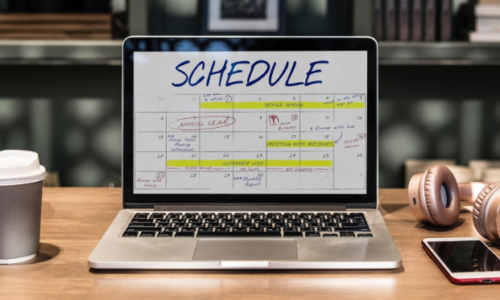Do you have a swimming pool at home? If you do, then you most probably enjoy spending those hot afternoons at the pool. Sometimes, you can even have a pool party with your friends or family. But honestly, when was the last time you cleaned your pool?
Maybe you do clean the pool by only getting rid of the leaves or other floating items. By the way, cleaning a pool is not as fun as swimming in it is. But this doesn’t mean that you should leave the pool dirty. There are many benefits of cleaning your swimming pool. Therefore, always ensure that your pool is clean enough. The cleaning frequency will depend on how often you use the pool.
But ideally, clean the pool once every week. So, how do you clean a pool? Let’s explore that.

What You Will Need
Before you can even think about cleaning the pool, you will need to assemble the needed equipment. Here is a list of the equipment you will need to clean your pool:
-
Telescopic Pole
This is the most commonly used equipment to clean pools. It is a rod that you will hold to use other equipment like vacuum heads, skimmer nets, and more. This pole will extend to different lengths. However, the standard length of a telescopic pole is 8 feet. They can also extend to a maximum of 16 feet to help you reach the pool floor with ease.
-
Skimmer Net
A skimmer net attaches to the telescopic pole when cleaning the pool. This net collects leaves, twigs, pool toys, bugs, or any other debris that floats on the water.
Skimmer nets come in two types: a bag skimmer and a flat skimmer. Flat skimmers are the best options for regular cleaning since it’s easy to shake off debris from it. On the other hand, bag skimmers are perfect for holding more dirt but difficult to empty.
-
Pool brush
A pool brush will help you scrub the walls, floor, and ladders of the pool to get rid of dirt and algae. The type of brush (bristles) will depend on the surface of your pool. The fragile the pool surface, the softer the brush bristles you will need. The fragile/soft the pool surface, the softer the brush bristles you will need. Hard brush bristles are perfect for using on equally hard surfaces like unpainted concrete pools.
-
Vacuum cleaner
When choosing a vacuum cleaner for your pool, you can either go for the manual or the automatic cleaner. The manual vacuum will also attach to the telescopic pole and connect to a vacuum hose. The vacuum hose then sucks out the dirt from the pool. You will need to move the manual vacuum cleaner across the bottom of the pool as you would with a carpet vacuum cleaner.
A rechargeable pool vacuum is the best choice for a small swimming pool. It is battery-operated, lightweight, and generally easy to use. It doesn’t run for a long time compared to an electric pool vacuum. That is why it is the best choice to use in a small pool.
Other equipment/supplies that you will need to clean your pool include a Water pH tester, pH increase, and reducer, as well as Chlorine. Chlorine is simply a chemical used to disinfect the pool water so that it is safe to swim. It can either be dissolvable tablets, liquid, or powder.

How to Clean the Swimming Pool
Now that you have all your cleaning supplies at your disposal, you should be ready to start cleaning. Here is how you should go about cleaning your swimming pool:
-
Skim the surface of the pool
First off, you will need to use the skimmer net, ideally the flat type, to clean the surface of the pool. Get rid of all the leaves and any other foreign solids on the pool surface. By the way, skimming the pool surface can be done as many times as you want. You can even do it daily if it gets dirty too often.
-
Brush around pool surface
After getting rid of the foreign solids, you should now use the brush to clean the floors, sides, ladders, and stairs of the pool. Use the brush to do this. You can connect it to the telescopic pole to help you get to the hard-to-reach areas. Applying some force to it helps you eliminate that stubborn grime.
-
Vacuum the pool
At this point, you will need to use your battery-operated vacuum to clean the bottom of the pool. Most probably, there will be debris at the pool floor if there is some dirt on the surface. Ensure that you move the vacuum slowly and evenly so that you don’t miss a spot. But most importantly, follow the user guide that comes with the pool vacuum
-
Clean the pool filters
By the time you reach this stage, it will mean that the pool is clean and free of dirt. Before you proceed to the next step, you will need to check the pool filter appropriately. Make sure you remove any grime, debris, and any buildup that could be clogging the filter. Too many people ignore the pool filter yet it is a very important part of the pool.
-
Test the pH level of the water
If the surface or bottom of the pool doesn’t have any solid materials, you will have to proceed to test the pH level. Ideally, ensure that the pH level is in the range of 7.2 and 7.6 when testing your pool. The pH increaser or reducer will be helpful at this point to adjust the pH range as needed. For the pH level, you can do it three to five times a week to ensure that your pool is safe to use at all times.
-
Add Chlorine to the Pool
Once you are done with everything and the pH level is at the perfect range, you will now need to add the chlorine. For a small swimming pool, chlorine tablets would work just fine. These tablets will help to sanitize the pool. When adding the chlorine tablets, use an automatic feeder, floater or skimmer. A 3-inch chlorine tablet will dissolve within seven days. This will also sanitize between 7,500 and 10,000 gallons of pool water.
Remember that proper swimming pool maintenance can save you time when cleaning the entire pool. Don’t forget to always use the right cleaning tools/supplies.

